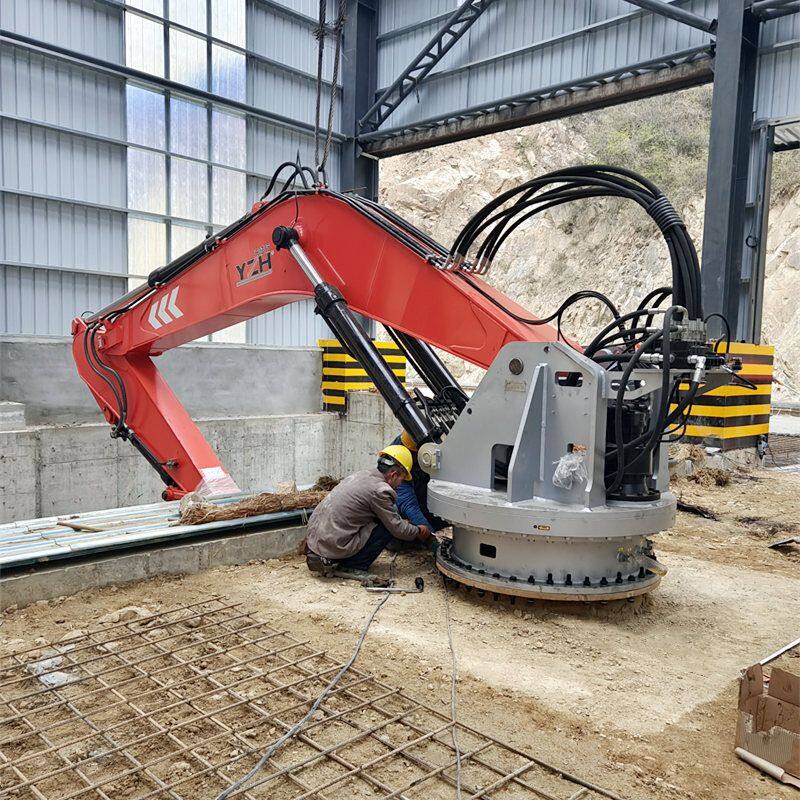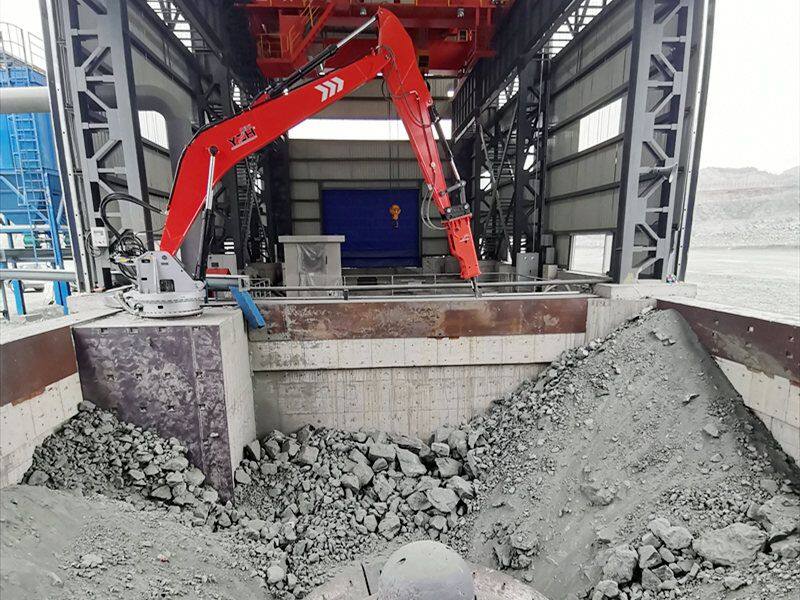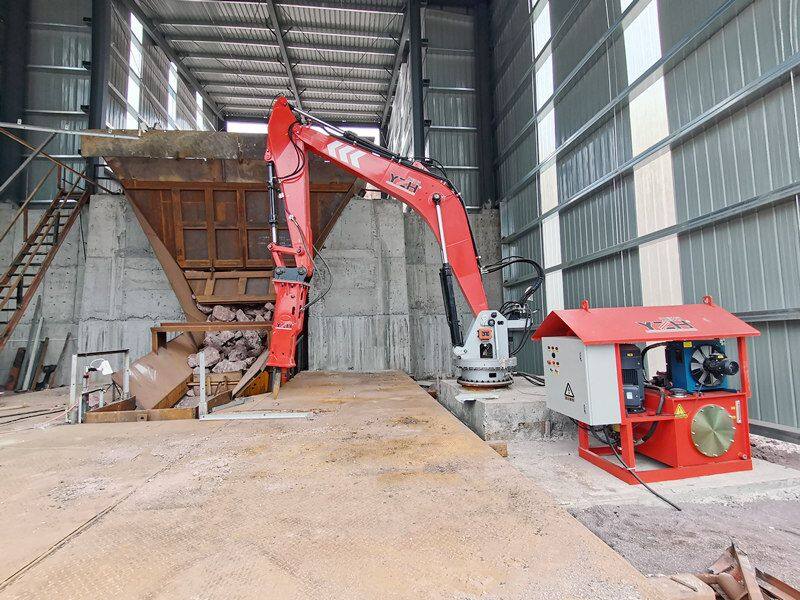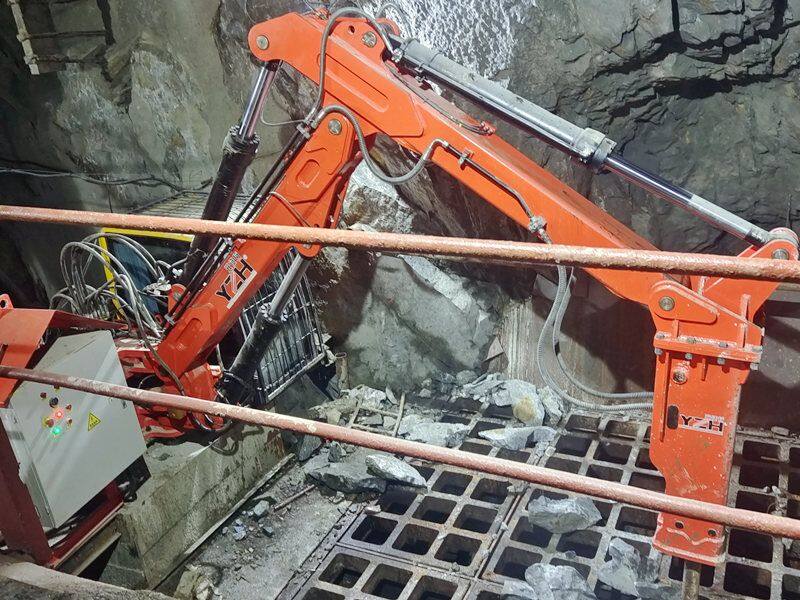-
 Sherry
Hi there! Welcome to my shop. Let me know if you have any questions.
Sherry
Hi there! Welcome to my shop. Let me know if you have any questions.
Your message has exceeded the limit.

Matching Your Crusher Type with the Right Pedestal Rock Breaker Boom System
2025-07-24 17:35:05
Matching Your Crusher Type with the Right Pedestal Rock Breaker Boom System
Choosing the right pedestal rock breaker boom system isn’t just about reach or breaker size—it’s also about compatibility with your crusher type. Each type of primary crusher presents different physical layouts, feed mechanisms, and blockage characteristics. Matching the breaker boom system to the crusher ensures smooth operations, fewer disruptions, and extended equipment life.
Here’s how to select the right system based on your crushing equipment:
1. Jaw Crushers (Primary Crushing Stations)
Typical Challenges:
Irregular oversize rocks block the feed opening
Large gap between grizzly screen and jaw inlet
Blockages often occur at the top of the chamber
Recommended Boom Setup:
Long horizontal reach, moderate vertical swing
Mount boom to cover grizzly bars and the jaw mouth
Medium-duty breaker with controlled impact force to avoid jaw damage
Control Preference:
Remote joystick (line-of-sight) or integrated into control tower
2. Gyratory Crushers
Typical Challenges:
Large volume flow and deep throat
Bridging occurs mid-way in the crushing chamber
Material buildup around the spider or mantle area
Recommended Boom Setup:
Heavy-duty boom with deep vertical reach
Top-down strike capability
Breaker positioned to access both chamber and spider rim area
Control Preference:
Wireless remote or PLC-integrated automation for centralized control
3. Hammer Crushers / Horizontal Impact Crushers
Typical Challenges:
Breaker use often needed upstream (pre-feed) rather than inside crusher
Less prone to blockages but more sensitive to uncrushed tramp material
Recommended Boom Setup:
Smaller boom, mounted over feeder or conveyor inlet
Breaker used to size material before entry
Control Preference:
Manual or semi-remote control, depending on blockage frequency
4. Grizzly Screens (Standalone or Crusher-Feed)
Typical Challenges:
Oversized rocks bridging across bars
Material stuck before reaching the crusher
Recommended Boom Setup:
Wide horizontal swing to clear broad grizzly surface
Mount to cover full width of the feeder
Fast, repeatable breaker strokes with accurate targeting
Control Preference:
Remote control with camera-assist if visibility is limited
5. Mobile Crushing Units
Typical Challenges:
Compact layout, limited mounting options
Transport constraints require foldable or lightweight systems
Recommended Boom Setup:
Compact, low-profile boom
Bolt-on systems designed for easy removal or repositioning
Breaker with fast response and low energy consumption
Control Preference:
Wireless remote with mobile control panel
The key to selecting the right rock breaker boom system isn’t just in the specs—it’s in understanding how your crusher behaves, where blockages happen, and what type of intervention is safest and fastest.
Choosing a system that aligns with your crusher type helps you:
Reduce unplanned downtime
Improve material flow efficiency
Extend the life of both crusher and breaker
Consult with a specialist or manufacturer who understands both your crusher design and site layout to tailor the optimal solution.




Tags: rock breaker boom system, pedestal rock breaker boom, boom system

